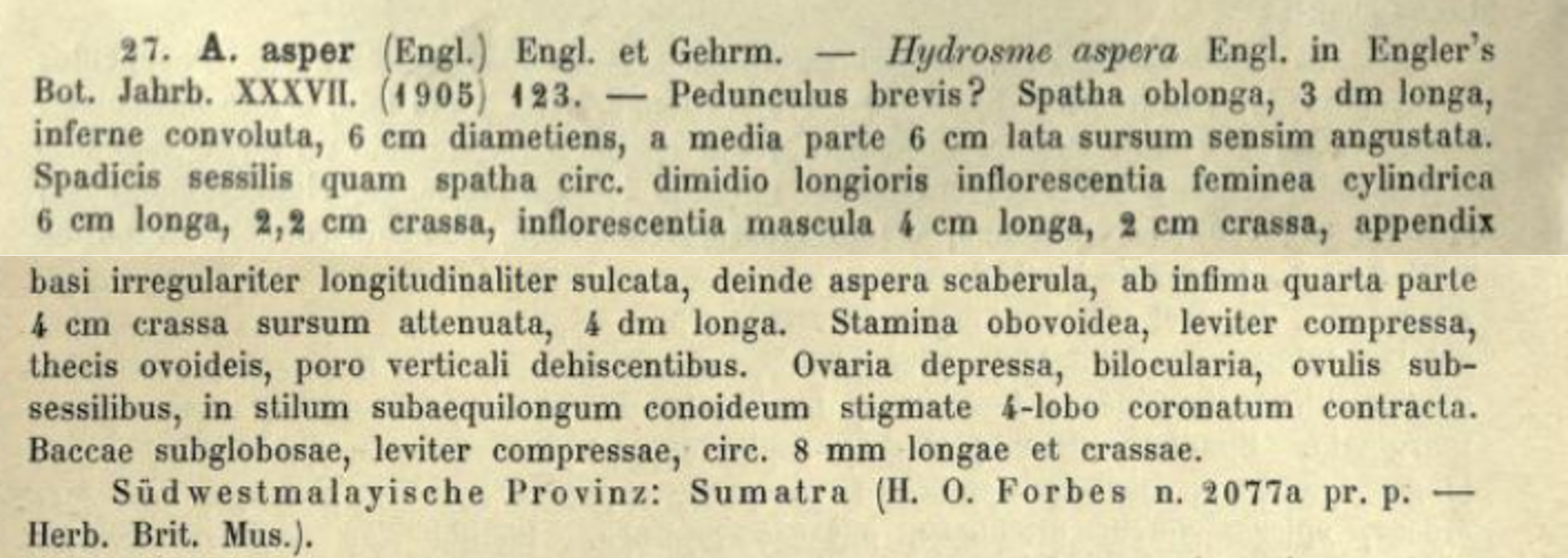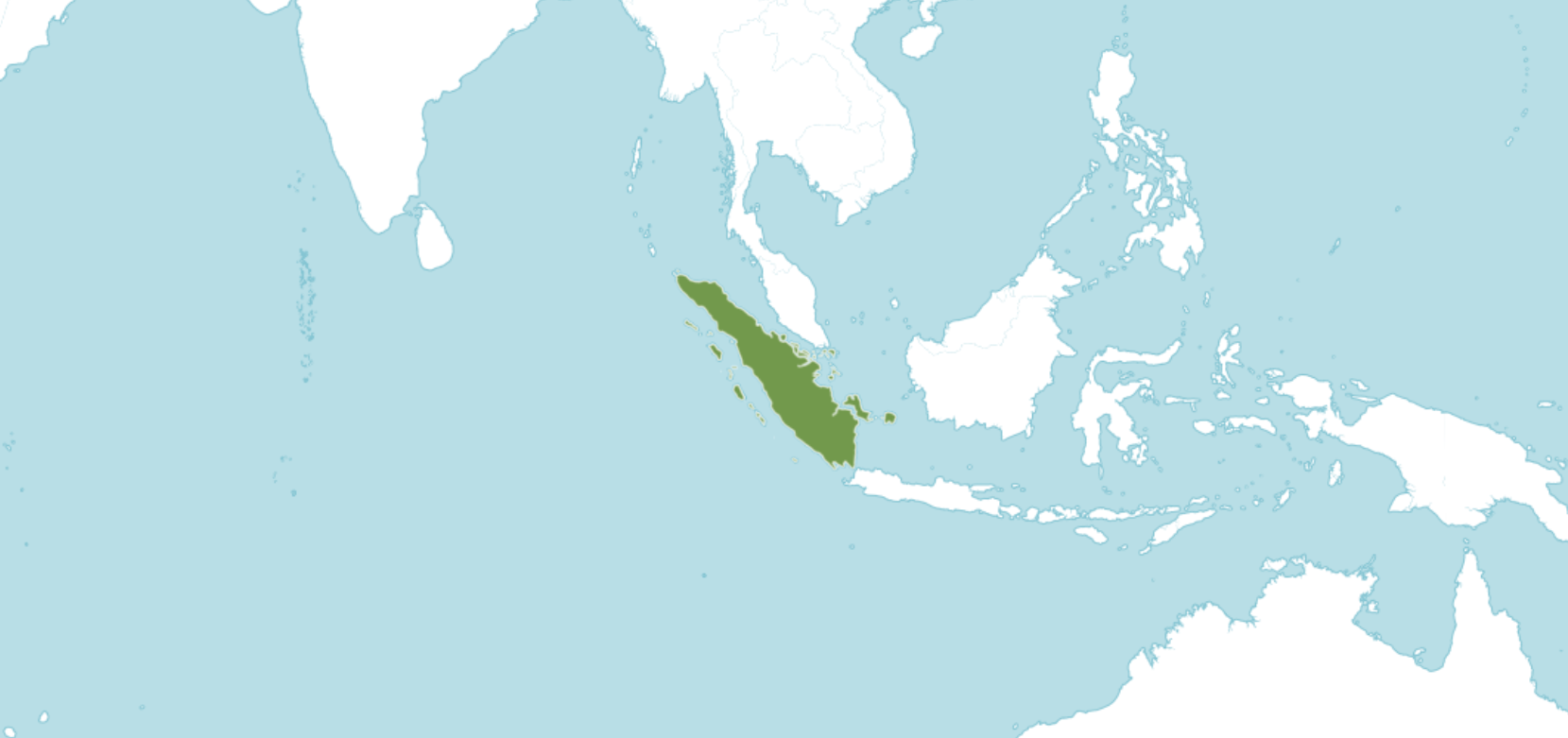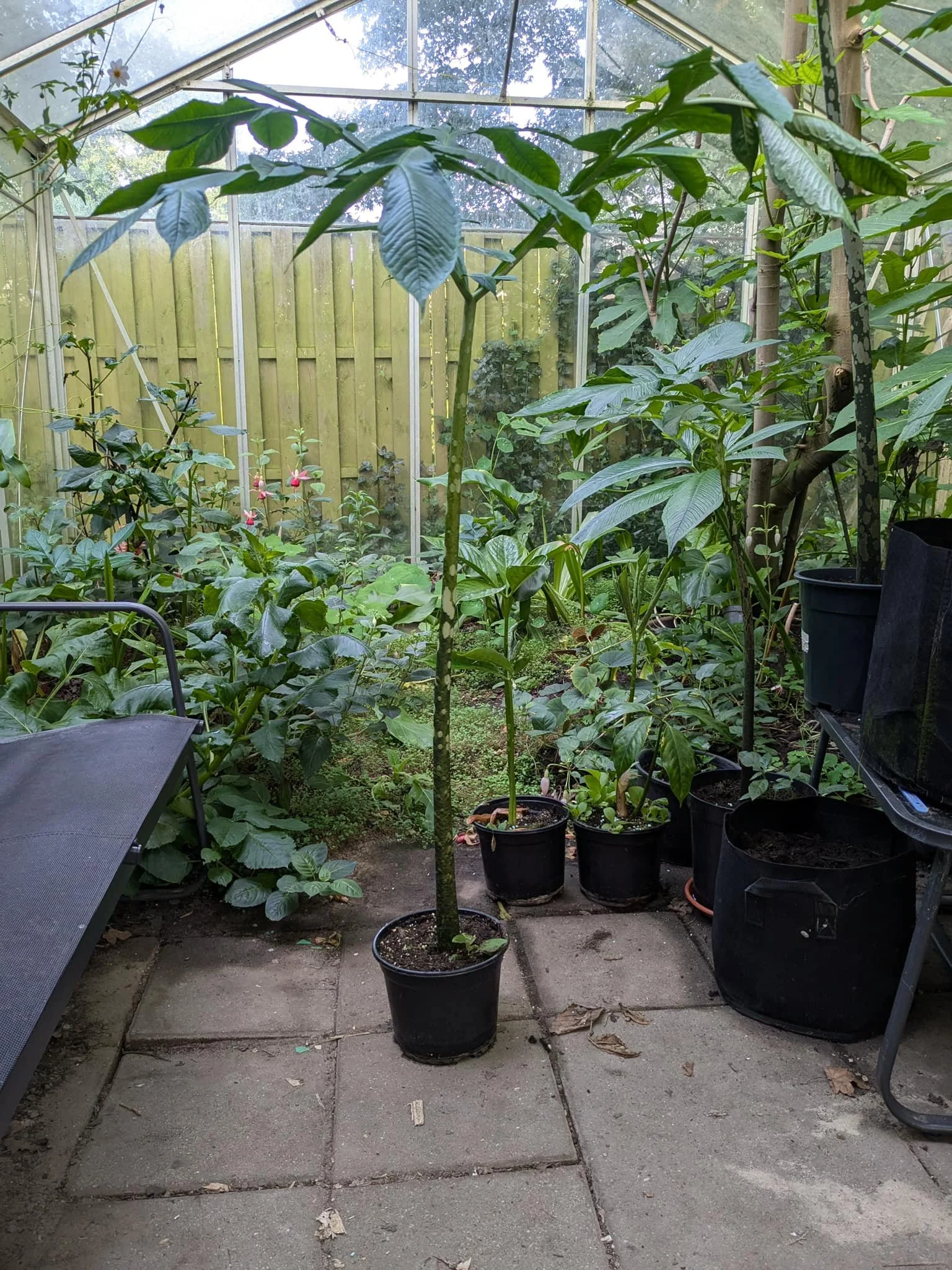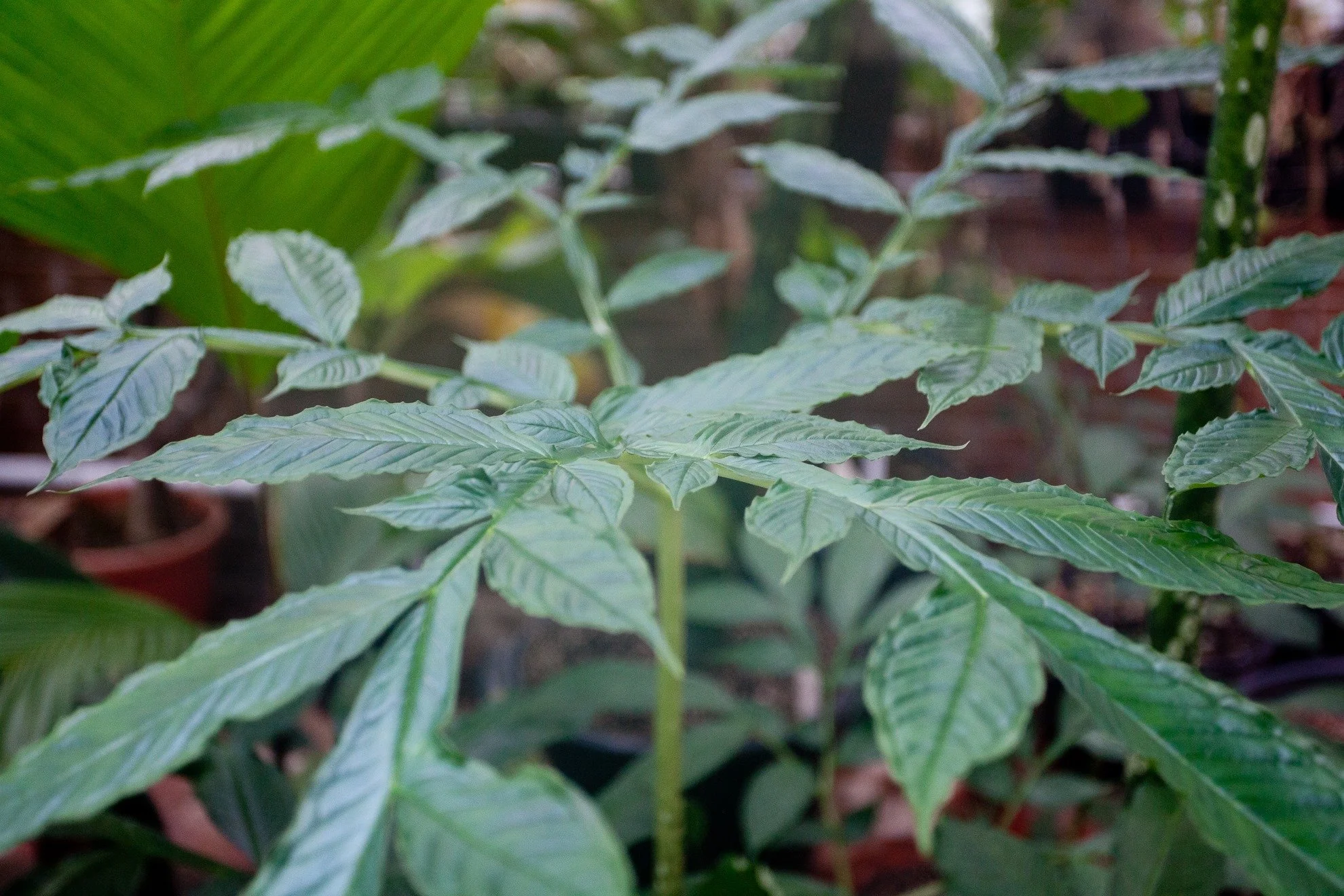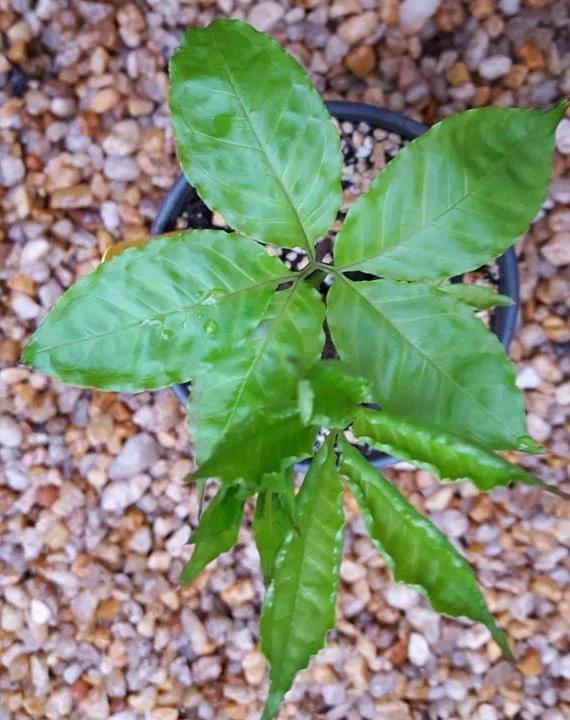AMORPHOPHALLUS ASPER
Photo by Mieke Roth
SYNONYMS:
HOMOTYPIC SYNONYMS: Hydrosme aspera
HETEROTYPIC SYNONYMS: N/A
ACCEPTED INFRASPECIFICS: N/A
DISTRIBUTION: Indonesia | Sumatra
CLIMATE: Unknown
ECOLOGY: It is a tuberous geophyte and grows primarily in the wet tropical biome.
SPECIES DESCRIPTION:
Peduncle short? Spathe oblong, 3 decimeters long, convolute at the base, 6 cm wide at the middle part, gradually narrowing upward.
INFLORESCENCE: The spadix is sessile and about half the length of the spathe. Female inflorescence cylindrical, 6 cm long and 2.2 cm thick; male inflorescence 4 cm long and 2 cm thick. The appendix is basally irregularly longitudinally furrowed, then rough and somewhat scabrous, thickest (4 cm thick) at the lower quarter, tapering upward, 4 decimeters long. Stamens obovoid, slightly compressed, with ovoid thecae, dehiscing by vertical pores. Ovaries depressed, bilocular, ovules sub-sessile, style nearly as long as the ovary, conical, with a contracted stigma crowned with 4 lobes. Berries subglobose, slightly compressed, about 8 mm long and thick.
VARIEGATED FORMS: N/A
ETYMOLOGY: The species epithet is based on the Latin asper/aspera meaning rough, harsh or coarse. In botany this usually refers to a rough or scabrous texture, often on the leaf or stem. In the case of Amorphophallus asper it refers to the rough texture of the spadix appendix
NOTES: N/A
CULTIVARS: N/A
HYBRIDS: N/A
REFERENCES:
Photos by Alan Galloway, Amelia Amelia, Bruno Antony, Claudia Hubert, Mieke Roth, Muhammad Fahmi, Thorge Tielitz, Xavier Garreau de Loubresse, and the Leiden Botanical Garden

